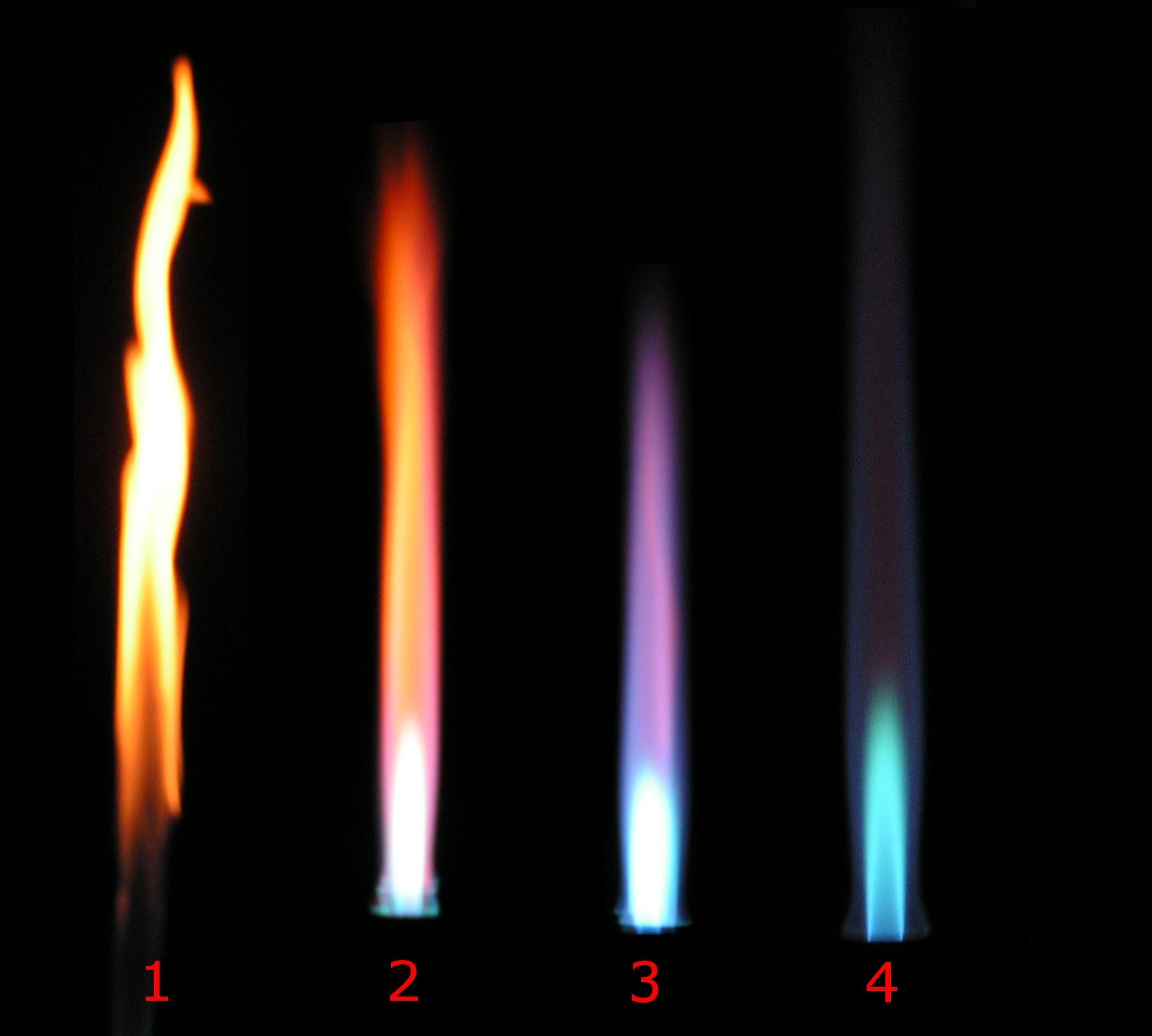Oxidizing And Reducing Flames on:
[Wikipedia]
[Google]
[Amazon]
 A flame is affected by the
A flame is affected by the 
in: "Jewelry concepts and technology", by Oppi Untracht, 1983, With some exceptions (e.g., platinum soldering in
 A flame is affected by the
A flame is affected by the fuel
A fuel is any material that can be made to react with other substances so that it releases energy as thermal energy or to be used for work (physics), work. The concept was originally applied solely to those materials capable of releasing chem ...
introduced and the oxygen
Oxygen is a chemical element; it has chemical symbol, symbol O and atomic number 8. It is a member of the chalcogen group (periodic table), group in the periodic table, a highly reactivity (chemistry), reactive nonmetal (chemistry), non ...
available. A flame with a balanced oxygen-fuel ratio is called a neutral flame. The color of a neutral flame is semi-transparent purple or blue. This flame is optimal for many uses because it does not oxidize or deposit soot onto surfaces.
Oxidizing flame
If the flame has too much oxygen, an oxidizing flame is produced. When the amount of oxygen increases, the flame shortens due to quicker combustion, its color becomes a more transparent blue, and it hisses/roars."The Anatomy of a Flame"in: "Jewelry concepts and technology", by Oppi Untracht, 1983, With some exceptions (e.g., platinum soldering in
jewelry
Jewellery (or jewelry in American English) consists of decorative items worn for personal adornment such as brooches, ring (jewellery), rings, necklaces, earrings, pendants, bracelets, and cufflinks. Jewellery may be attached to the body or the ...
), the oxidizing flame is usually undesirable for welding
Welding is a fabrication (metal), fabrication process that joins materials, usually metals or thermoplastics, primarily by using high temperature to melting, melt the parts together and allow them to cool, causing Fusion welding, fusion. Co ...
and soldering, since, as its name suggests, it oxidizes the metal's surface. The same principle is important in firing pottery
Pottery is the process and the products of forming vessels and other objects with clay and other raw materials, which are fired at high temperatures to give them a hard and durable form. The place where such wares are made by a ''potter'' is al ...
.
Reducing flame
A reducing flame is a flame with insufficient oxygen. It has an opaque yellow or orange color due tocarbon
Carbon () is a chemical element; it has chemical symbol, symbol C and atomic number 6. It is nonmetallic and tetravalence, tetravalent—meaning that its atoms are able to form up to four covalent bonds due to its valence shell exhibiting 4 ...
or hydrocarbon
In organic chemistry, a hydrocarbon is an organic compound consisting entirely of hydrogen and carbon. Hydrocarbons are examples of group 14 hydrides. Hydrocarbons are generally colourless and Hydrophobe, hydrophobic; their odor is usually fain ...
s which bind with (or reduce) the oxygen contained in the materials the flame processes. The flame is also called carburizing flame, since it tends to introduce carbon soot into the molten metal.
The flame also produces carbon monoxide
Carbon monoxide (chemical formula CO) is a poisonous, flammable gas that is colorless, odorless, tasteless, and slightly less dense than air. Carbon monoxide consists of one carbon atom and one oxygen atom connected by a triple bond. It is the si ...
, a poisonous gas which burns on the outer envelope of flame into carbon dioxide
Carbon dioxide is a chemical compound with the chemical formula . It is made up of molecules that each have one carbon atom covalent bond, covalently double bonded to two oxygen atoms. It is found in a gas state at room temperature and at norma ...
.
Reducing flames with no carbon
Reducing zero-carbon fuel flames, such as reducing hydrogen flames, are exceptions. They don't have an opaque yellow or orange glow, nor do they produce soot or carbon monoxide.See also
* for further details about the above types of flame in oxy-fuel burners * Oxyhydrogen *Redox
Redox ( , , reduction–oxidation or oxidation–reduction) is a type of chemical reaction in which the oxidation states of the reactants change. Oxidation is the loss of electrons or an increase in the oxidation state, while reduction is t ...
*Oxygen
Oxygen is a chemical element; it has chemical symbol, symbol O and atomic number 8. It is a member of the chalcogen group (periodic table), group in the periodic table, a highly reactivity (chemistry), reactive nonmetal (chemistry), non ...
* Flame test
* Spark testing
References
{{reflist Fire